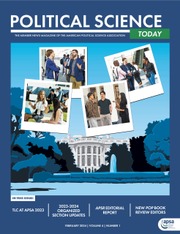Since June 1, 2024, the American Political Science Review, has been edited by a new team composed of sixteen editors at thirteen different universities, among whom John Gerring (University of Texas at Austin) and Monika Nalepa (University of Chicago) have the role of co-Lead Editors. The rest of the team includes:
-
• Marisa Abrajano, University of California, San Diego
-
• Laia Balcells, Georgetown University
-
• Pablo Beramendi, Duke University
-
• Carles Boix, Princeton University
-
• Alexandre Debs, Yale University
-
• Scott de Marchi, Duke University
-
• Andrew Eggers, University of Chicago
-
• Gregory Huber, Yale University
-
• Sebastian Karcher, Syracuse University
-
• Isabela Mares, Yale University
-
• Alison McQueen, Stanford University
-
• Daniel Pemstein, North Dakota State University
-
• Julie Rose, Dartmouth College
-
• Sharece Thrower, Vanderbilt University
Dragana Svraka continues her work as our managing editor. Each editor also relies on one or several editorial assistants.
We thank the previous editorial team for their great work and important reforms that have improved the journal. We are committed to continuing with innovations with the goals of research transparency and replicability while improving the efficiency of the daily operations of the journal. Ultimately, we aspire to publish the top scholarship across different areas of political science. For the authors, we aim to make the process of submission, receiving feedback, and review, a rewarding experience, even if their research does not end up being published in the APSR. For the reviewers, we hope to use their service sparingly by sending only the most promising manuscripts for external review and relying extensively on the expertise of our Editorial Board members.
This report focuses on four aspects of the journal: (1) new initiatives, (2) submissions, (3) review process and decision-making, and (4) publishing and post-publication impact. Data compiled for this report cover the first eight months of our tenure (June 1, 2024 – January 31, 2025). This is a short period, to be sure, and will not register the results of most of our initiatives, which will have to await subsequent reports.
INITIATIVES
The process of academic peer review and publication is currently in a period of intense introspection and transformation. Revisions are being driven by technological changes as well as by the desire to promote cumulation in the sciences and introduce greater efficiencies. Since assuming responsibility for the journal, we have introduced several changes which we describe briefly below.
Technical checks. Technical checks are now conducted after an article has cleared the initial in-house review. This speeds up the process and relieves authors of the tedious task of aligning their formatting to APSR standards before review.
Length. In our view, there can be no standard length for a political science journal article. Some subjects, and some methodologies, demand more space than others. To that end, we have relaxed current word-count limits to make room for shorter papers as well as longer papers, as topic and approach demand. In keeping with this change, the “Letters” category has been dropped. This should make it easier for work that employs qualitative or mixed methods, as these papers tend to run longer than the traditional journal article.
Reject and resubmit. Submissions that are judged promising but contain potentially fixable problems—e.g., ambiguities about theory or research design or poor framing—are now sent back to authors with an invitation to resubmit. This is discussed below.
Registered reports. Following the lead of the Journal of Experimental Political Science and the Journal of Politics, we have implemented a registered reports track at the journal. We view this track as appropriate for confirmatory (testing) projects (where there is a clearly defined theory, a priori) that have determinate research designs involving a limited number of empirical procedures that can be laid out in a detailed fashion in a pre-analysis plan.
Review transfers. Submissions that go through the review process but are ultimately declined may be transferred, with their reviews, to another journal so long as the reviewers consent. This is also discussed further below.
Comments. Along with each published article, we plan to offer reviewers the option of publishing their reviews as comments that are posted on the page with the published article. These may be redacted in any way the reviewer sees fit but will remain anonymous. Authors will have an opportunity to respond. We will also welcome post-publication commentary from anyone else who cares to discuss a paper previously published in the journal. The proviso is that each intervention must be polite in tone and germane in content, and the author of the commentary must be identified (by logging in with their credentials to Cambridge Core). These commentaries will be reviewed by the editorial team, after which the authors of the original article may publish responses.
Replications. Discussion of a published article (in any journal) that surpasses the bounds of a short comment can be submitted through a new Replications track. These submissions follow the same protocol as all other articles. That said, if a significant problem in an article published in the journal is identified and if the replication is carried out fairly and rigorously (and the article has not previously been replicated or that earlier replication is limited or flawed), we have a strong ethical obligation (consistent with the Committee on Publication Ethics [COPE] standards) to publish that replication. The authors of the original article will have the opportunity to comment on the replication and can also post a response as a Comment (as above).
Publicity. We have publicized all our published articles on social media (BlueSky, X, Facebook) and we have published two “Conversations with Authors;” we are in the process of preparing two additional episodes.
SUBMISSIONS
Over the years the APSR submissions have increased, with some variation year-by-year. Typically, the number of submissions increases immediately after a new editorial team takes over. This also happened at the start of our tenure. Indeed, in the calendar year 2024, the APSR received the most submissions ever—1,711 (a slight increase over 1,651 in 2023).
We summarize these trends in Figure 1. In the first 8 months of our tenure (June 1, 2024–January 31, 2025), we received 1,199 new submissions (1,179 research articles, 15 registered reports, and 5 replications/reappraisals).

Figure 1. Submissions to the APSR over Time
Note: Data per calendar year. To maintain comparability, data extend only through calendar year 2024.
Submissions to the APSR reflect diversity within the discipline of political science. Table 1 below presents information about the subfield of the submission, as identified by the corresponding author, for last 5 editorial teams (data include only first eight months of our tenure). These categories are remarkably stable over time.
Table 1. Submissions by Section and Editorial Team
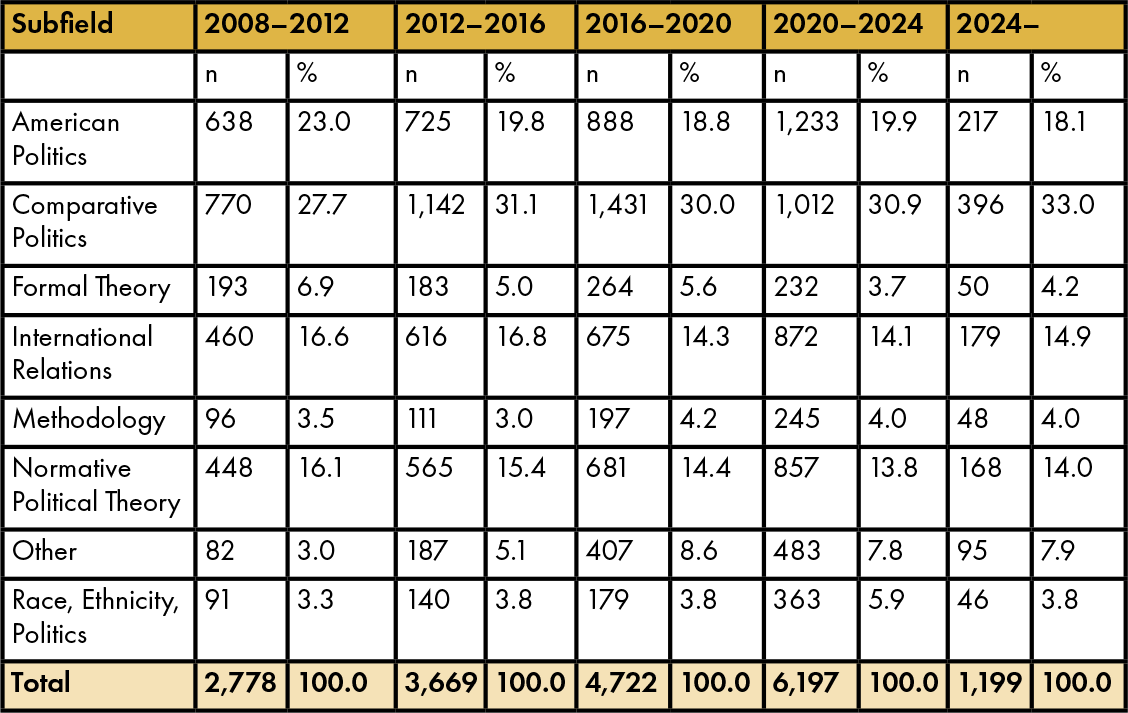
Diversity within political science is also reflected by methodology, as classified by the corresponding author. (Where multiple methodologies are employed, the author presumably selects the main or most important method.) Results are reported below in Table 2. Again, we find little change vis-à-vis previous years.
Table 2. Submissions by Methodology and Editorial Team

Note: Some submissions are missing responses to questions about the methodology used and they are excluded from the count.
Finally, the diversity within political science is reflected in demographic information about authors who submit to the APSR. Data on gender and racial/ethnic identities of all authors (corresponding author and other co-authors) have been collected at the time of initial submission to the journal since 2018. We present data on gender in Table 3, and data on race and ethnicity in Table 4. The submitting authors who did not answer these questions are included among the uncoded. Again, there is little change from previous teams, though we note that an increasing number of contributors choose not to report their race/ethnicity.
Table 3. Submissions by Authors’ Gender
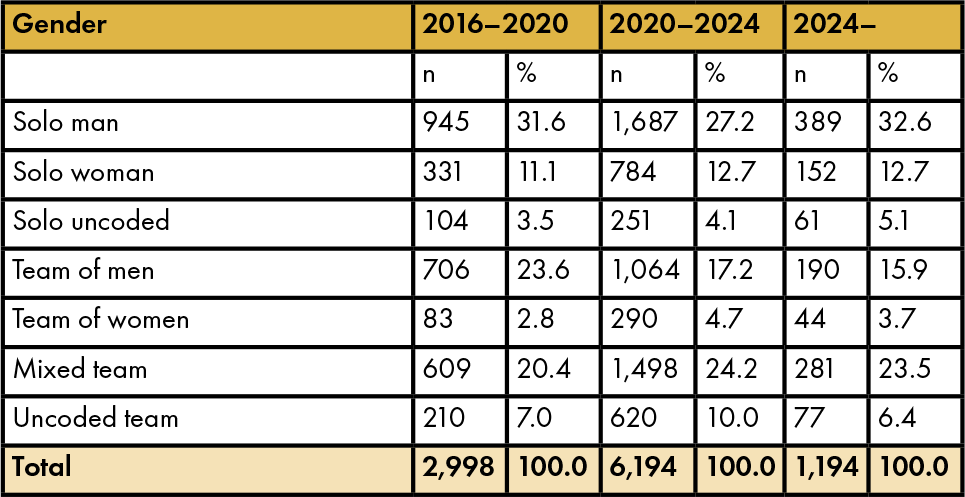
Note: Following the coding used previously, the authors who identified as non-binary were included in uncoded totals (for the current editorial team that includes 9 authors).
Table 4. Submissions by Authors’ Race and Ethnicity
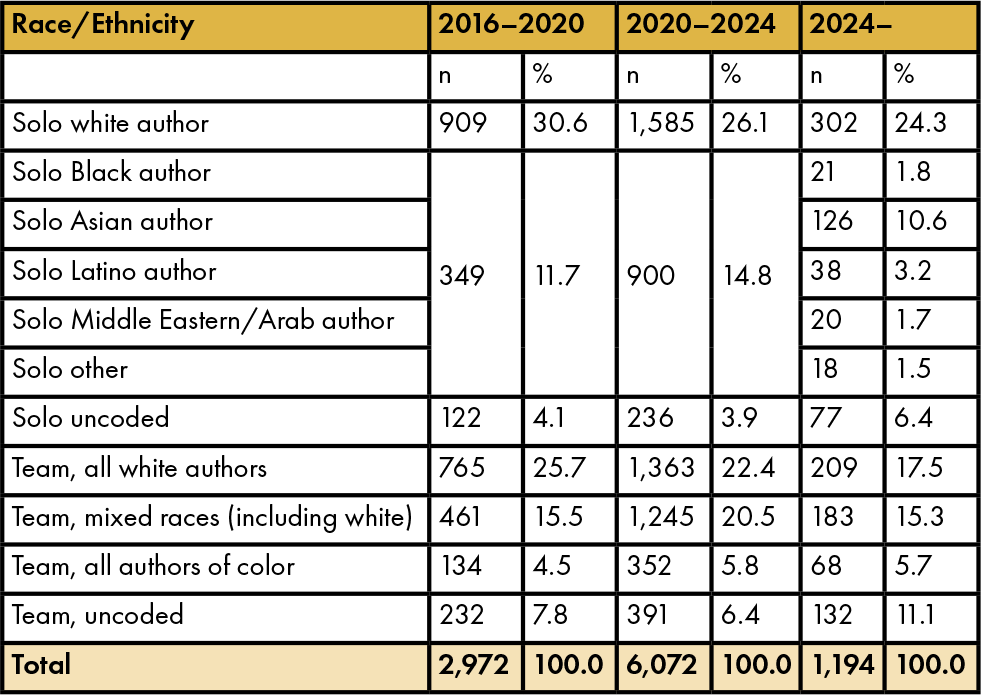
DECISION MAKING
Submissions to the journal keep increasing, as shown in Figure 1. However, academics’ willingness to review does not keep pace with the flow, as shown in Table 8 and reports from many other journals across the social sciences. Good reviewers are hard to find. Indeed, the previous team’s success rate was just over 50%, suggesting that they were not getting their first choice of reviewers much of the time.
We recognize that reviewers for the APSR are doing essential—unremunerated—service for the discipline. We are committed to respecting their time, and well aware of how difficult it is to recruit qualified reviewers who are appropriate for highly specialized, often very technical, submissions.
We are also aware that external reviewers are in some respects not well-positioned to judge whether a given submission belongs in the journal as they have not seen the entire set of papers submitted over the past year—the population of interest. As such, they are in the position of a food critic asked to rank the top restaurants in a city after having tasted the food at one establishment.
With these considerations in mind, we decided to shift the burden of reviewing, making more of the initial decisions based on internal reviews by the editorial team and sparing our reviewers in cases where we judge the likelihood of eventual publication is slight. At least two members of the editorial team reviews each manuscript prior to the initial decision to desk reject or send out for review.
This has the added benefit of speeding the process of review, allowing authors to move on to other outlets if unsuccessful at the APSR. Since our in-house reviews are often quite detailed, we try to offer suggestions for revision whenever we think our comments might be helpful. (Feedback from authors suggests that this is often appreciated.)
Some desk rejections are now accompanied by an invitation to resubmit. In this instance, we judge the submission to be promising but not ready to send to reviewers. A letter to the author explains the difficulties we foresee and offers concrete suggestions for revision. If the author(s) chooses to do so (and nearly all do), their submission is sent back to the original handling editor and—in nearly all cases—sent out for review. In Table 6 we share some preliminary results from this initiative.
The enhanced role played by the editorial team is reflected in a considerably higher desk-reject rate (Table 5), but also a quicker turnaround (Table 7). We anticipate that results for manuscripts sent out for review will be more favorable as the first hurdle is higher, though numbers are insufficient as of yet to provide a basis for assessment.
Table 5. Decisions on New Submissions
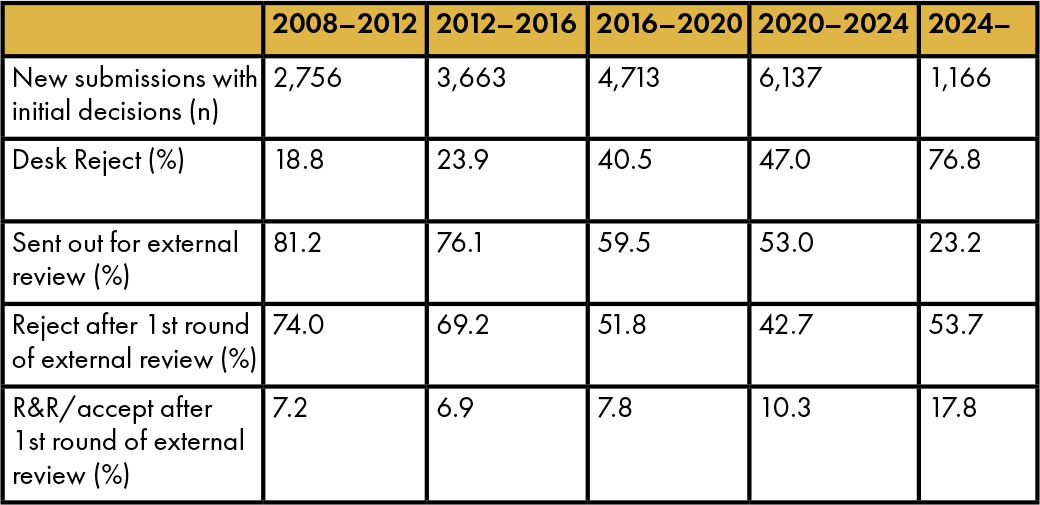
Table 6. Manuscripts with Reject and Resubmit Decision
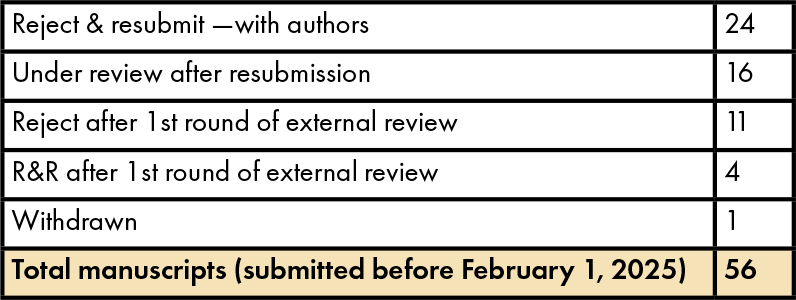
Note: Data accessed on February 21, 2025.
Table 7. Summary Turnaround Times for Initial Decisions

Table 8. Reviewer Invitations and Completed Review of New Manuscripts
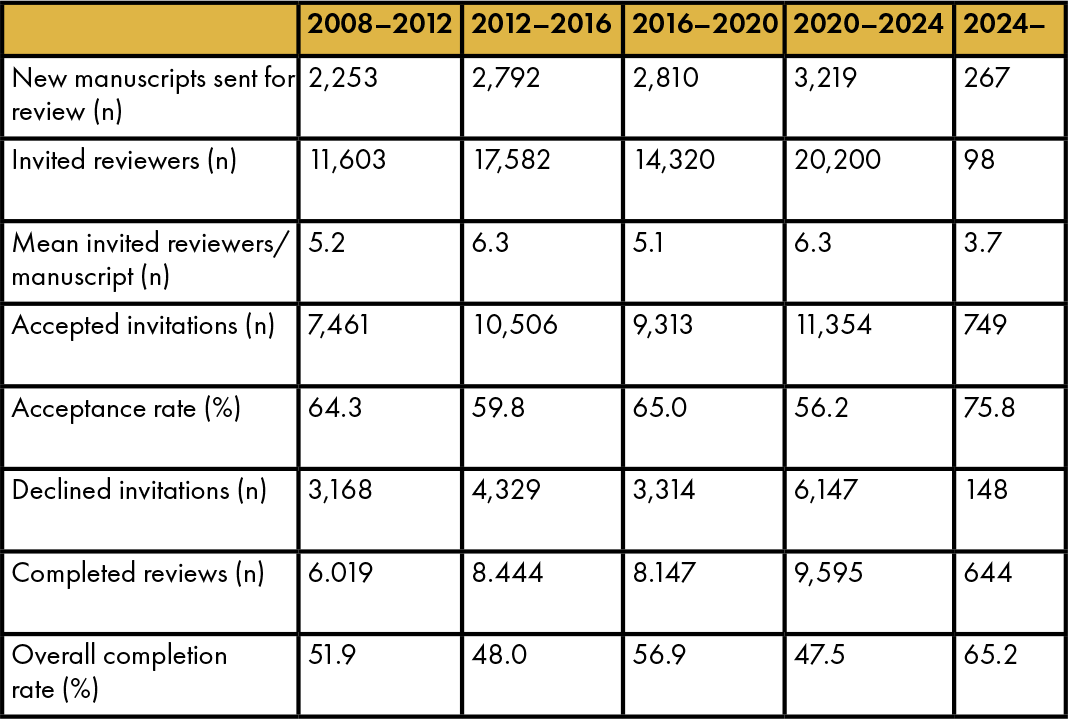
Note: For the current team, we use the information only on the new manuscripts submitted within the first 8 months of our tenure.
Since manuscripts have already undergone an extensive in-house review, we feel confident in making final decisions with the input of two external reviewers—though it is not uncommon for us to ask for a third reviewer in difficult cases. It should be noted that our team leans heavily on the expertise of its Editorial Board, who are usually quite responsive. All reviewers are asked to provide a review within three weeks, a deadline that is usually met.
As a result of these initiatives, we are happy to report that median time (number of days) has decreased for all initial decisions: desk rejects, rejections after external review, and invitations to revise and resubmit (Table 7).
For those authors whose manuscripts are rejected after review, we have opened up a new option. They may transfer their reviews to another journal, provided reviewers agree and that journal has agreed to participate. Currently, 30 journals have joined this consortium (see Table A1), and we are anticipating that many more will sign up once the protocol becomes accepted.
PUBLISHING
The APSR publishes 4 issues per calendar year (4 issues make 1 volume). However, all accepted manuscripts enter the production immediately after the acceptance and get published on the APSR “First View” before the inclusion in the issue. Therefore, the issues published since the change of the editorial team include articles that were already published on the First View at the time of editorial change.
An overview of the published content over time is presented below in Table 9. One should keep in mind that since 2023, our publisher (Cambridge University Press) primarily tracks the number of published articles rather than published pages. The number of pages per issue is still relevant for printing purposes since we aim to publish each issue in a single-bound volume (the APSR is still printed for distribution to several libraries worldwide). The number of research publications in each volume excludes corrections and Notes from the Editors (that is, it includes only citable research materials).
Table 9. Pages and Publications per Volume
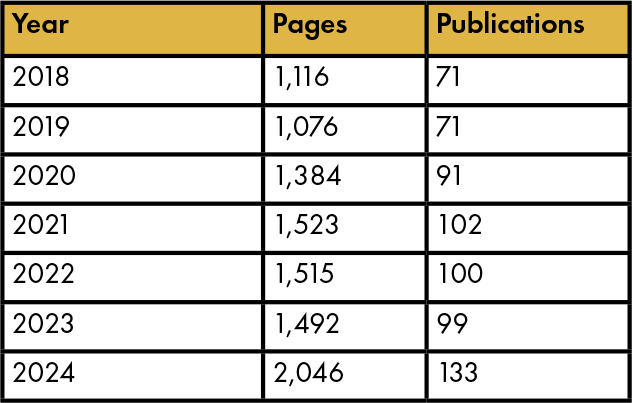
Many research publications in the APSR are published as Open Access, allowing readers everywhere immediate access to the published content. Over the years, we have greatly expanded the percentage of articles published in Open Access; you can see the overview in Figure 2.

Figure 2. Open Access Research Content Over Time
Checks for reproducibility occur after conditional acceptance. For papers with quantitative analyses, this includes assuring that there is a ReadMe file and codebook, running code to see that tables and figures are correctly reproduced, and verifying formal models. This continues the trend that started with the previous editorial team, which instituted the process of checking the deposited materials at the APSR Dataverse but did not conduct full reproducibility checks.
In Tables 10 and 11 we present the data on published articles since the change of editorial team (focusing on subfields and methodology). One should keep in mind that the articles included in this analysis were mostly submitted (and/or reviewed) before the change of editorial teams. However, all the manuscripts accepted after June 1, 2024, have undergone reproducibility checks. Regarding the publishing of the new APSR articles, we note that the production and publication of the accepted articles by our publisher, Cambridge University Press, was severely disrupted for several months (starting in early June) due to a cyberattack. At the moment, we have published all the accepted articles that were impacted by the disruption.
Table 10. Accepted Manuscripts by Section and Editorial Team
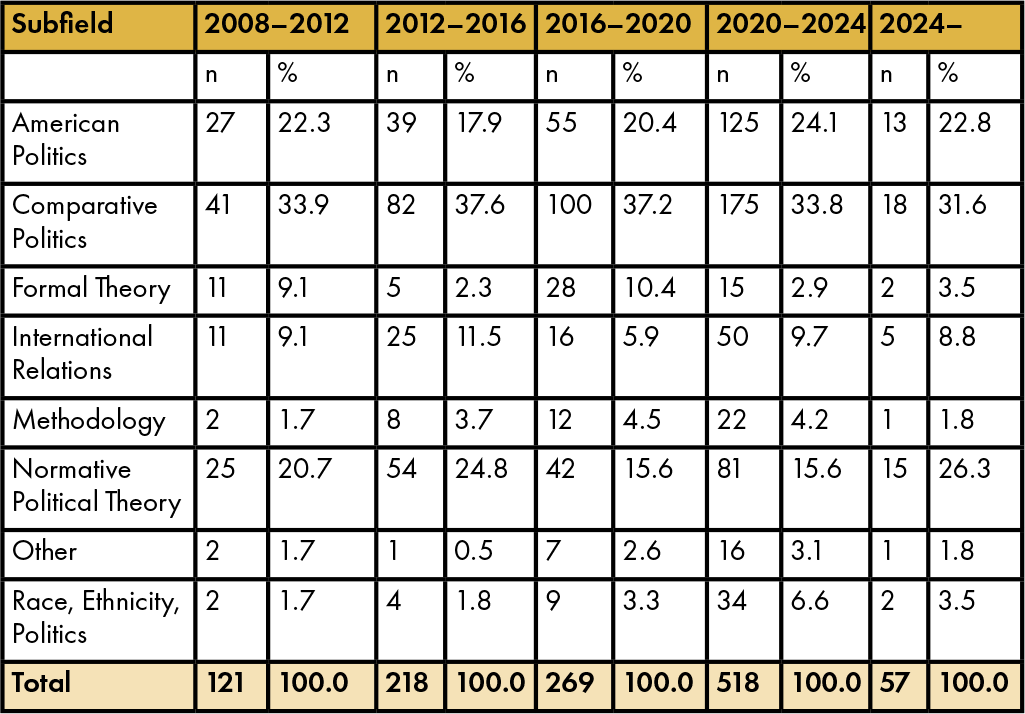
Table 11. Accepted Manuscripts by Methodology and Editorial Team
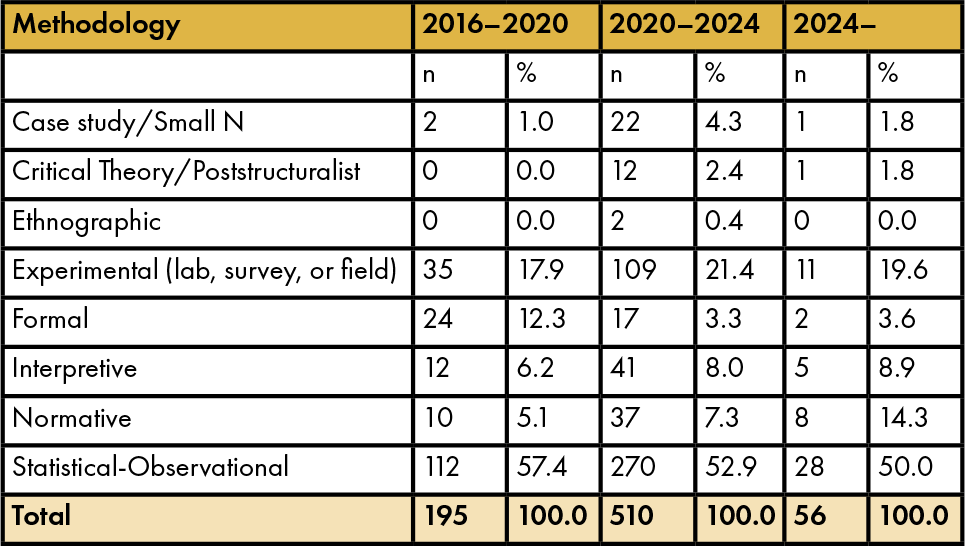
Note: Excludes accepted manuscripts with missing data.
We also include information about the demographics of accepted manuscripts (see Table 12 for data on gender and Table 13 for data on race and ethnicity).
We end with the recognition that a journal’s quality is reflected in its impact factor (JIF), which is measured as a ratio of citations to citable items (that is, published research manuscripts). Compared with the other top general journals in political science, one can see that the APSR has consistently been ranked as the top journal in political science (see Figure 3 below). We hope to maintain this trend throughout our tenure.
Table 12. Acceptances by Authors’ Gender

Note: Data include all acceptances for submissions submitted after January 1, 2018.
Table 13. Acceptances by Authors’ Race and Ethnicity
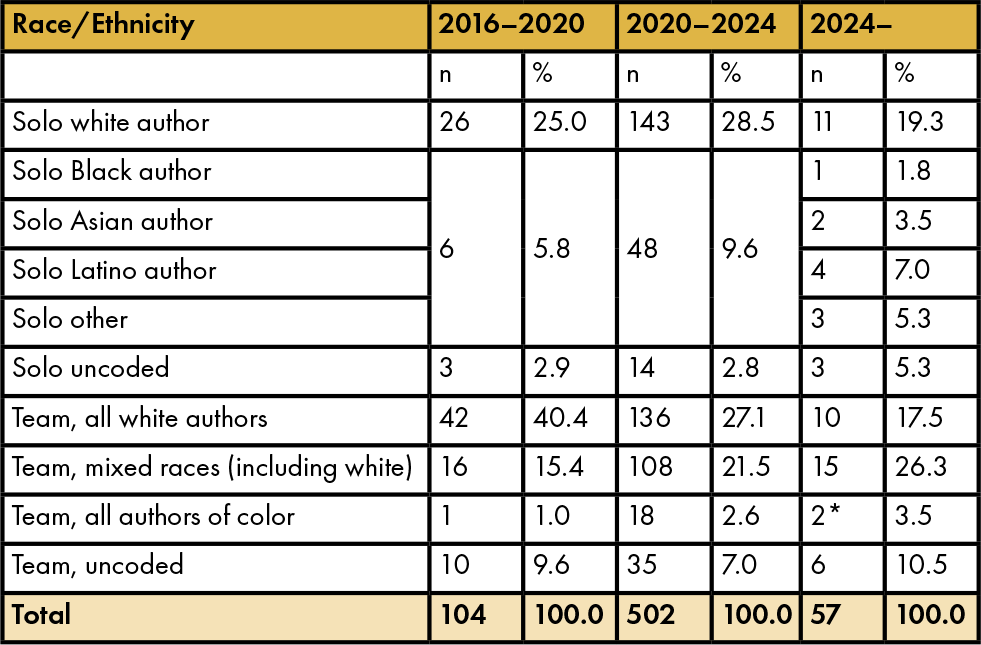
Note: Data include all acceptances for submissions submitted after January 1, 2018. Previous editorial teams combined information about all solo non-white authors in a single category (“author of color”); we disaggregate this category based on the authors’ answers. *One “all authors of color team” was Asian, and the other included coauthors who chose different categories.

Figure 3. Journal Impact Factor Over Time
APPENDIX
Table A1. Journals Participating in Review Transfers from/to the APSR

Note: The information was last updated on March 17, 2025.
